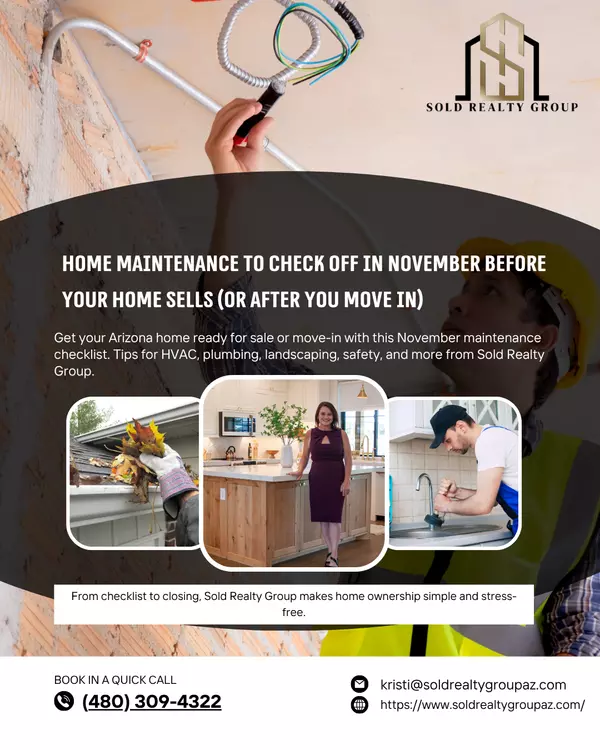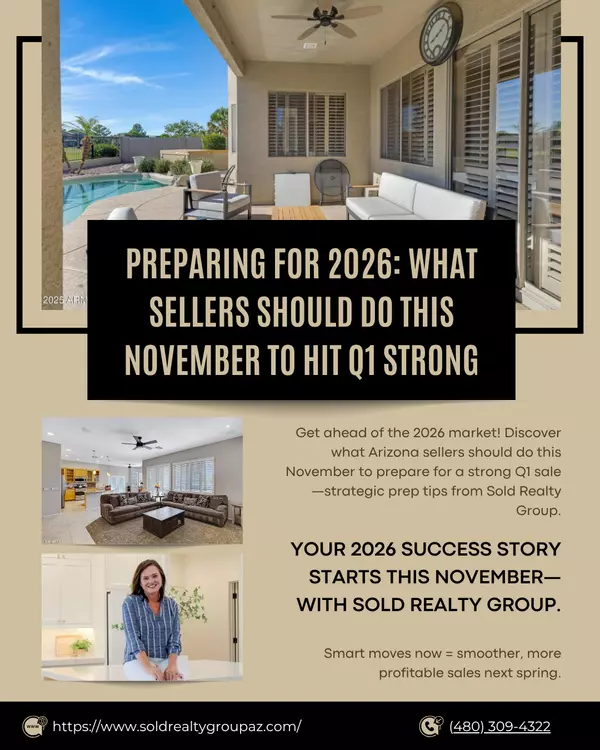How to Set a Competitive Price for Your Home in 2025
The real estate market is constantly changing, and 2025 presents unique challenges and opportunities for homeowners looking to sell. Setting the right price for your property is essential to attracting buyers, securing competitive offers, and ensuring a smooth transaction. Here’s a detailed guide to help you determine a competitive listing price for your home in today’s dynamic market.
Why Pricing Matters in 2025
The real estate market in 2025 is influenced by several key factors, including:
- Economic Conditions: Rising interest rates and inflation can impact buyer purchasing power.
- Market Inventory: A high number of listings may create more competition for sellers, while low inventory can favor higher prices.
- Local Trends: Arizona’s real estate market remains attractive, but regional variations can significantly impact pricing strategies.
A well-priced home can generate strong interest, leading to quicker sales and potentially multiple offers. Conversely, overpricing can result in your home sitting on the market, which may reduce its perceived value.
1. Research Local Market Trends
Understanding the current state of your local market is a crucial first step in pricing your home.
-
Buyer vs. Seller Market:
- In a seller’s market, with high demand and low inventory, homes often sell for more than the asking price.
- In a buyer’s market, with higher inventory, pricing competitively is critical to stand out.
-
Local Influences in Arizona:
Factors like proximity to major employers, school district quality, and new development projects can impact neighborhood desirability.
Action Tip: Partner with a real estate agent who has deep knowledge of your area to access up-to-date market insights.
2. Conduct a Comprehensive Market Analysis (CMA)
A Comparative Market Analysis is a cornerstone of pricing your home effectively.
-
What Does a CMA Include?
- Recent sales data for similar homes (comps) within your area.
- Active listings that represent your competition.
- Expired listings to understand what prices didn’t work.
-
Key Metrics:
- Sale price per square foot.
- Days on market for comparable homes.
- Features that add or detract from value, such as pool access or outdated interiors.
Pro Tip: Compare homes that match your property as closely as possible in terms of size, age, and condition to get an accurate picture of its market value.
3. Highlight the Unique Selling Points of Your Home
Every home has unique features that can influence its value.
-
Functional Upgrades:
- Energy-efficient systems (e.g., HVAC or solar panels).
- Smart home technology and appliances.
-
Aesthetic Enhancements:
- Modern kitchen or bathroom updates.
- Fresh landscaping or curb appeal improvements.
-
Desirable Locations:
Homes near parks, schools, or in up-and-coming neighborhoods often fetch higher prices.
4. Understand the Risks of Overpricing
Setting a price that’s too high can be detrimental to your sale.
-
Fewer Showings:
Buyers may skip your listing if it doesn’t align with their expectations for value. -
Longer Time on Market:
Homes that linger on the market are often perceived as “stale,” leading to lower offers. -
Potential Price Reductions:
Multiple price drops can signal desperation and weaken your negotiating power.
5. Leverage Professional Tools and Insights
To arrive at an accurate price, consider these resources:
-
Real Estate Agents:
Experienced agents use their local expertise and market knowledge to recommend a competitive price. -
Professional Appraisals:
A licensed appraiser provides an unbiased assessment of your home’s market value based on data-driven criteria. -
Online Valuation Tools:
Platforms like Zillow or Realtor.com offer automated estimates, but remember these tools often lack the nuance of in-person analysis.
6. Incorporate Strategic Pricing Techniques
Psychology plays a role in how buyers perceive your asking price.
-
Rounded Pricing:
- Listing at $499,900 instead of $500,000 can make the price seem more affordable.
-
Competitive Pricing:
- Pricing slightly below market value in competitive neighborhoods can generate multiple offers and create a bidding war.
7. Consider Seasonal Trends
Real estate markets fluctuate throughout the year, and timing your listing can impact your price.
-
Spring and Summer:
These are traditionally the busiest seasons for real estate, often yielding higher prices. -
Winter and Holidays:
While there may be fewer buyers, those in the market are typically more motivated.
Arizona Insight: The winter months attract out-of-state buyers seeking vacation homes, making it a unique selling window for local sellers.
8. Adjust Based on Buyer Feedback
After your home is listed, keep an eye on buyer activity and be open to adjustments.
-
Signs of Overpricing:
- Lack of showings or offers within the first few weeks.
- Negative feedback about price during open houses.
-
Reassess and Adjust:
Work with your agent to make strategic price changes if necessary. Even a small reduction can reignite interest.
Take the Next Step in 2025
Pricing your home effectively requires a mix of market insight, professional advice, and strategic decision-making. By partnering with a knowledgeable real estate agent and staying informed about trends, you can set a competitive price that appeals to buyers and maximizes your return.
Ready to make your move in 2025? Sold Realty Group is here to help!
- Phone: (480) 309-4322
- Email: [email protected]
- Website: www.soldrealtygroupaz.com
Let’s turn your real estate goals into reality!
Categories
- All Blogs (233)
- Arizona Real Estate & Local Market (18)
- Buying, Selling & Investing Tips (73)
- Home Improvement Ideas (40)
- HOME MAINTENACE TIPS (22)
- Home Selling Strategies (26)
- Legal & Financial Consideration (11)
- Listing (4)
- Living in Queen Creek (13)
- LIVING IN SANTAN VALLEY (10)
- Local Business Spotlight (1)
- Local Events & Activities (2)
- Question & Answers (1)
- Real Estate Education & Empowerment (8)
- Sold Selling Method: Perception (5)
- Sold Selling Method: Presentation (5)
- Sold Selling Method: Price (3)
- Staging (14)
- Sustainability and Green Living (4)
Recent Posts










GET MORE INFORMATION


